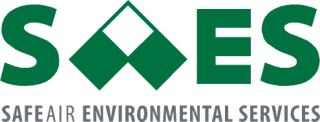How to Control Workplace Pollution
Workplace pollution can be described as the presence of various polluting materials including noises inside an organization or workplace exposed to those working in that organization and having the potential to cause hazards to human health. Humans can be exposed to hazardous materials in several ways including: [Read Health Hazards Associated with Benzene]
- Direct contact with corrosive and/or toxic materials
- Accidentally ingesting toxic chemicals or polluted liquid/water
- Breathing in the air inside the workplace- this air can be polluted
- Workplace noise is another instance of workplace pollution affecting a worker’s hearing power
Defining Workplace Pollution:
To define it can be said that workplace pollution occurs when noises or hazardous materials are present inside a workplace which may come in contact or affect the people when performing their job. These workplace pollutants tend to affect a worker’s health and safety, especially if the exposure continues for a long time period even at extremely low levels. Workplace hazards include airborne pollution that can otherwise be described as hazardous substances in the form of particulate matter or gases that disperse in the air to pollute the environment. Another noteworthy workplace hazard includes exposure to skin, injection or ingestion of pollutants.
Check on Workplace Pollution:
So, how do you correct air pollution or put a check on it? The answer is that there are several regulations such as preventive regulations and safety procedures under Occupational Safety and Health Administration (OSHA) and several Environmental Protection Agency (EPA) regulations. Generally, it is required of employees to comply with these regulations and employers to ensure the safety of workplace environments. The same measures are involved in preventing pollution anywhere in the world.
The Measures for Preventing Workplace Pollution Include
- Good Air Ventilation
- Wearing protective gear or equipment while contacting hazardous materials that cannot be otherwise avoided
- Deploying safety procedures (for example, identifying and avoiding direct contact with corrosive or toxic materials,
- Not eating or drinking the presence of toxic or hazardous materials,
- Wearing protective gear as and when required).
For that matter, all the environmental investigation are inclusive of appropriate and adequate health and safety plans. Look for a consulting company [How to Select an Environmental Consultant?] that provides quality environmental and health and safety monitoring solutions to make sure that the all the health and safety aspects are covered properly. Safe Aires is one such organization that offers impartial health and safety compliance services at reasonable prices with effective results.
